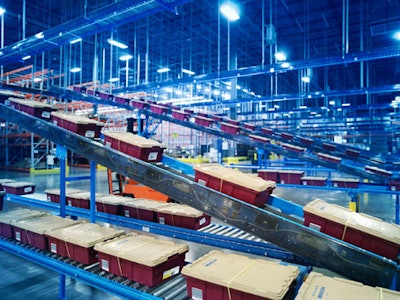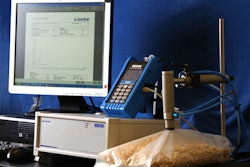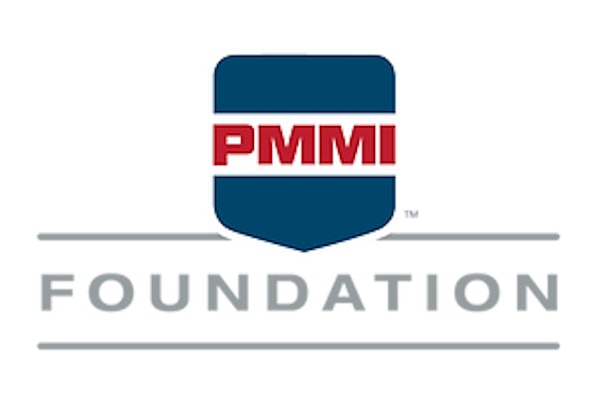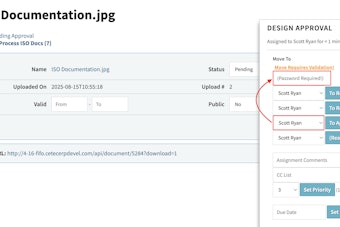
Prescription drug distributor McKesson Corp. announced an initiative aimed at reducing carbon dioxide emissions and trimming drug distribution costs.
McKesson provides pharmaceuticals to more than 40,000 health locations in the U.S., ranging from hospitals and health systems to community pharmacies and national chain stores to the Department of Veterans Affairs. It is now using IBM's new Web-based analytics offering, the Supply Chain Sustainability Management Solution (SCSM), to simultaneously minimize both its carbon dioxide emissions and its distribution costs.
According to the U.S. Environmental Protection Agency, transportation is the second-largest contributor to the nation's CO2 emissions.
The new technology McKesson is using was developed in collaboration with IBM Global Business Services and IBM Research mathematicians. The system draws on McKesson's supply chain, sales and geographic data to create “what if” scenarios that are helping in decision-making concerning distribution network modeling, supply planning, inventory positioning, vehicle routing, and sustainability management.
“We are advancing our ability to contain costs while contributing to the health of our environment,” says Don Walker, McKesson's senior vice president distribution operations. “IBM has given us the tools we need to weigh the environmental and financial effects of actions we may take in our supply chain. “This system will be valuable to any business seeking ways to achieve both their financial and carbon reduction goals.”
McKesson could use the system to determine the value of keeping pharmaceuticals that need to be kept cold, such as insulin and vaccines, in one central refrigeration facility. The tool calculates the inventory cost and the potential reduction in carbon emissions against the option of keeping such products in all its warehouses. Based on such comparisons the system provides recommendations to allow for increased efficiency with minimal environmental impact.
Similarly, SCSM can identify the best ways to bring pharmaceutical products into McKesson's distribution network and manage inventory and customer deliveries in a way that minimizes both McKesson's carbon footprint and its costs. For instance, it can calculate the emissions implications and monetary cost of transporting a given product from the vendor directly to local warehouses or through a central warehouse and recommend the best action.
“Any enterprise interested in boosting efficiencies and promoting responsible environmental stewardship should take note of what McKesson is doing,” says Dave Lubowe, vice president, supply chain, IBM Global Business Services.
Among SCSM's capabilitiesare the following:
• Evaluating site locations based on CO2 emissions, transportation,warehousing, and inventory costs.
• Determining the cost of serving a customer based on carbon dioxide emissions and dollars and cents.
• Weighing the costs and benefits of alternative transportation modes.
• Predicting the impact of using solar panels on a warehouse, or using alternative fuels on a given route.
The sustainability module of SCSM uses detailed data on all the energy consuming equipment McKesson has in its warehousing and transportation operations, including fork lifts, conveyers, refrigerators, HVAC, and trucks, along with their specifications and hours of operation.
Based on this information, the tool estimates energy use and carbon emissions relating to supply chain activities and reports on them by operation, site, product, or other categories. For example, if a demand for a particular medication rises in a specific region, the tool can calculate how much more energy those sites will have to consume, how much more carbon will be emitted, and by what amount material handling and storage costs will rise.
SCSM can also be used to better understand the cost and carbon implications of alternative distribution configurations. It can quantify the cost and carbon benefits of relocating a warehouse, or opening an additional warehouse in a given location.
SCSM uses a Web interface and a Cognos dashboard for reporting. It runs on a variety of IBM middleware.
McKesson provides pharmaceuticals to more than 40,000 health locations in the U.S., ranging from hospitals and health systems to community pharmacies and national chain stores to the Department of Veterans Affairs. It is now using IBM's new Web-based analytics offering, the Supply Chain Sustainability Management Solution (SCSM), to simultaneously minimize both its carbon dioxide emissions and its distribution costs.
According to the U.S. Environmental Protection Agency, transportation is the second-largest contributor to the nation's CO2 emissions.
The new technology McKesson is using was developed in collaboration with IBM Global Business Services and IBM Research mathematicians. The system draws on McKesson's supply chain, sales and geographic data to create “what if” scenarios that are helping in decision-making concerning distribution network modeling, supply planning, inventory positioning, vehicle routing, and sustainability management.
“We are advancing our ability to contain costs while contributing to the health of our environment,” says Don Walker, McKesson's senior vice president distribution operations. “IBM has given us the tools we need to weigh the environmental and financial effects of actions we may take in our supply chain. “This system will be valuable to any business seeking ways to achieve both their financial and carbon reduction goals.”
McKesson could use the system to determine the value of keeping pharmaceuticals that need to be kept cold, such as insulin and vaccines, in one central refrigeration facility. The tool calculates the inventory cost and the potential reduction in carbon emissions against the option of keeping such products in all its warehouses. Based on such comparisons the system provides recommendations to allow for increased efficiency with minimal environmental impact.
Similarly, SCSM can identify the best ways to bring pharmaceutical products into McKesson's distribution network and manage inventory and customer deliveries in a way that minimizes both McKesson's carbon footprint and its costs. For instance, it can calculate the emissions implications and monetary cost of transporting a given product from the vendor directly to local warehouses or through a central warehouse and recommend the best action.
“Any enterprise interested in boosting efficiencies and promoting responsible environmental stewardship should take note of what McKesson is doing,” says Dave Lubowe, vice president, supply chain, IBM Global Business Services.
Among SCSM's capabilitiesare the following:
• Evaluating site locations based on CO2 emissions, transportation,warehousing, and inventory costs.
• Determining the cost of serving a customer based on carbon dioxide emissions and dollars and cents.
• Weighing the costs and benefits of alternative transportation modes.
• Predicting the impact of using solar panels on a warehouse, or using alternative fuels on a given route.
The sustainability module of SCSM uses detailed data on all the energy consuming equipment McKesson has in its warehousing and transportation operations, including fork lifts, conveyers, refrigerators, HVAC, and trucks, along with their specifications and hours of operation.
Based on this information, the tool estimates energy use and carbon emissions relating to supply chain activities and reports on them by operation, site, product, or other categories. For example, if a demand for a particular medication rises in a specific region, the tool can calculate how much more energy those sites will have to consume, how much more carbon will be emitted, and by what amount material handling and storage costs will rise.
SCSM can also be used to better understand the cost and carbon implications of alternative distribution configurations. It can quantify the cost and carbon benefits of relocating a warehouse, or opening an additional warehouse in a given location.
SCSM uses a Web interface and a Cognos dashboard for reporting. It runs on a variety of IBM middleware.





















